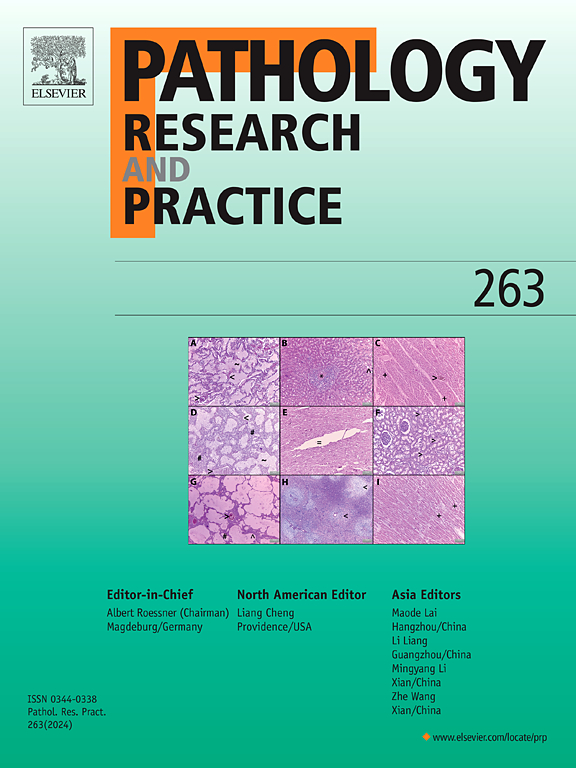ATP ion channel-type P2X purinergic receptors as a key regulatory molecule in breast cancer progression
IF 2.9
4区 医学
Q2 PATHOLOGY
引用次数: 0
Abstract
Studies have confirmed that ATP ion channel P2X purinergic receptors play a key role in tumor growth and metastasis. Similarly, P2X purinergic receptors can be used as a favorable regulatory molecule of breast cancer cells to participate in the progression of breast cancer. There are abundant ATP and its cleavage products in breast cancer microenvironment, which can be used as natural activators of P2X purinergic receptors. P2X purinergic receptors play a role in regulating the growth and metastasis of breast cancer cells by mediating signal transduction, growth regulation and immune cell activity in microenvironment. However, the application of P2X purinergic receptors antagonist has the pharmacological characteristics of inhibiting the progression of breast cancer cells. Among P2X purinergic receptors, there is a close relationship between P2X7 receptor and breast cancer patients. P2X purinergic receptors can be used as a biological marker for breast cancer patients. In this paper, we discuss the functional role and regulatory molecular mechanism of P2X purinergic receptors in the progression of breast cancer. The pharmacological effects of P2X purinergic receptors selective antagonist on the growth, metastasis and invasion of breast cancer cells were further discussed. Therefore, P2X purinergic receptors can be used as a key regulatory molecule of breast cancer and a pharmacological target for potential therapy.
求助全文
约1分钟内获得全文
求助全文
来源期刊
CiteScore
5.00
自引率
3.60%
发文量
405
审稿时长
24 days
期刊介绍:
Pathology, Research and Practice provides accessible coverage of the most recent developments across the entire field of pathology: Reviews focus on recent progress in pathology, while Comments look at interesting current problems and at hypotheses for future developments in pathology. Original Papers present novel findings on all aspects of general, anatomic and molecular pathology. Rapid Communications inform readers on preliminary findings that may be relevant for further studies and need to be communicated quickly. Teaching Cases look at new aspects or special diagnostic problems of diseases and at case reports relevant for the pathologist''s practice.

 求助内容:
求助内容: 应助结果提醒方式:
应助结果提醒方式:


